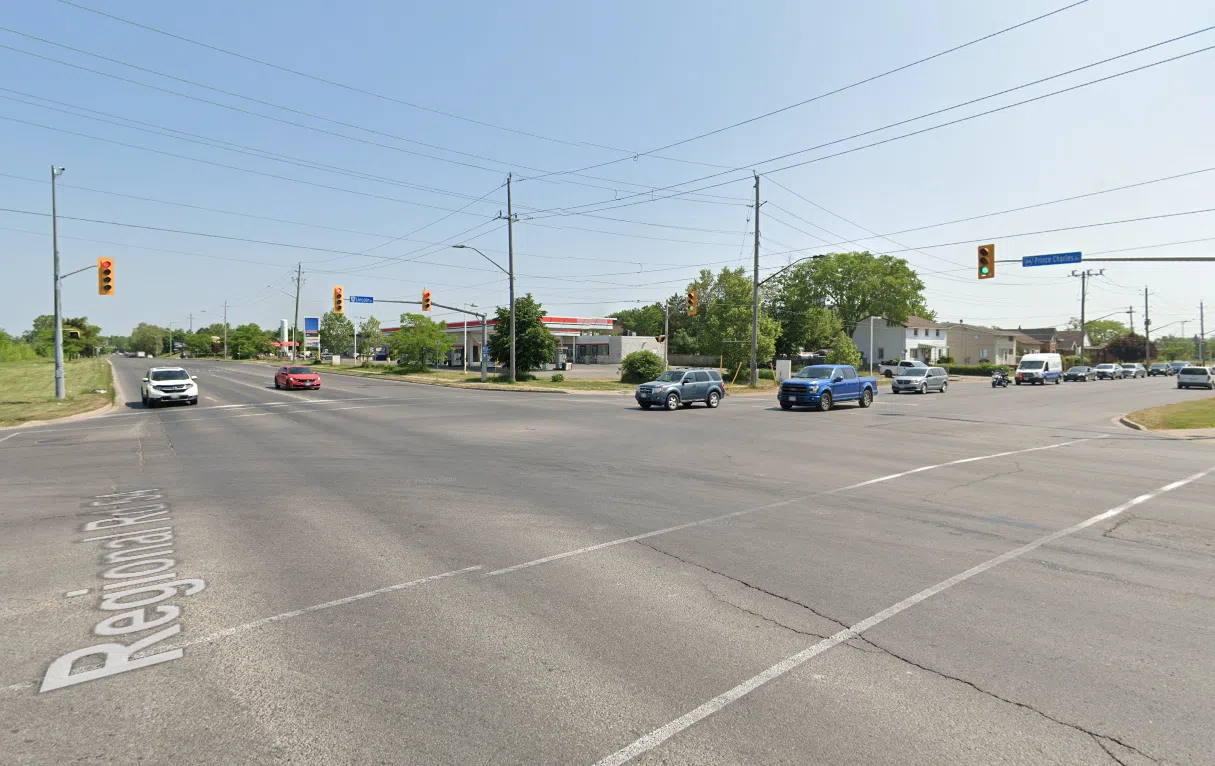
Prince Charles Drive & Lincoln Street, Welland. Photo: Google Maps
Three red light cameras in the Niagara Region are active starting today, as the region focuses on avoiding serious collisions in intersections.
Director of Transportation Planning Scott Fraser says while the cameras are always on, footage is always reviewed before a ticket is given.
Audio PlayerFraser says the Region’s goal is to improve road safety for all users. Regional staff often deal with safety concerns raised by residents about speeding on Regional roads. While speed is a basic risk factor in traffic, it is also a primary cause of crashes, often contributing to serious injury or death. As part of the Region’s ‘Vision Zero Road Safety’ initiative, the Red Light Cameras as well as Automated Speed Cameras have been set up throughout the region.
Fraser clears up what would be considered running a red light, as it’s an area of the project that has a lot of people talking.
Audio PlayerWhile running a red light is obviously illegal, most intersections allow you to turn right on a red light – including those with red light cameras. Fraser explains how you can do this without being flagged by a camera.
Audio PlayerThe locations active starting today are: Stanley Avenue and Dunn Street in Niagara Falls, Niagara Street and Parnell Road in St. Catharines, and Lincoln Street and Prince Charles Drive in Welland. Seven more locations are expected to go live in the coming weeks across the region, while a map of camera locations and which ones are live is available here.
Regional Council approved the locations as part of a Public Works Committee report in April 2023. The locations were chosen based on expected collision reduction analysis, site installation feasibility and to ensure coverage across Niagara. This approach is consistent with how other municipalities select red light camera sites.
Future expansion to more locations will not be recommended until staff review the early results of the red light camera program. This is to ensure that we are achieving the safety benefits of the program’s objectives. Expansion of the program will require a decision by Council.





Comments